- History of Hiroshima City
- Food of Hiroshima City
- Culture of Hiroshima City
- Highlights of Hiroshima City
History of Hiroshima City
History 1: Outline
The center of Hiroshima is a sandbar at the mouth of the Oota River, known as the Oota River
Delta.
The history of present-day Hiroshima began at the end of the 16th century when the warlord Mori
Terumoto built Hiroshima Castle and moved his residence from Koriyama Castle (a mountain town an
hour's drive north of present-day Hiroshima City). The city developed as the castle town of
Hiroshima Castle and as a city on the Seto Inland Sea.
In 1868, the Edo shogunate ended, and the Japanese government came into being. In 1894, a railway
line was opened from Tokyo to Hiroshima. The port of Hiroshima became a base of operations during
the war between Japan, China, and Russia. Accordingly, Hiroshima rapidly developed into a military
and academic capital.
On 6 August 1945, an atomic bomb was dropped on Hiroshima, which had never been bombed before.
Hiroshima was instantly burnt to the ground, and it is estimated that over 140,000 people lost their
lives.
While battling the aftereffects of the bombing, the survivors worked hard to rebuild Hiroshima,
which now has a population of one million.
The fish of the Seto Inland Sea, especially sea bream and oysters in winter, are famous. Beef, pork,
and chicken are also delicious.
Okonomiyaki, or layered pancakes, are a Hiroshima specialty, and there are many restaurants
throughout the city.
The city is home to Mazda, a car manufacturer, and many branches offices are located here.
The city is also home to a number of sports teams, including the Hiroshima Carp baseball team and
Sanfrecce Hiroshima, a professional football team (J-League).
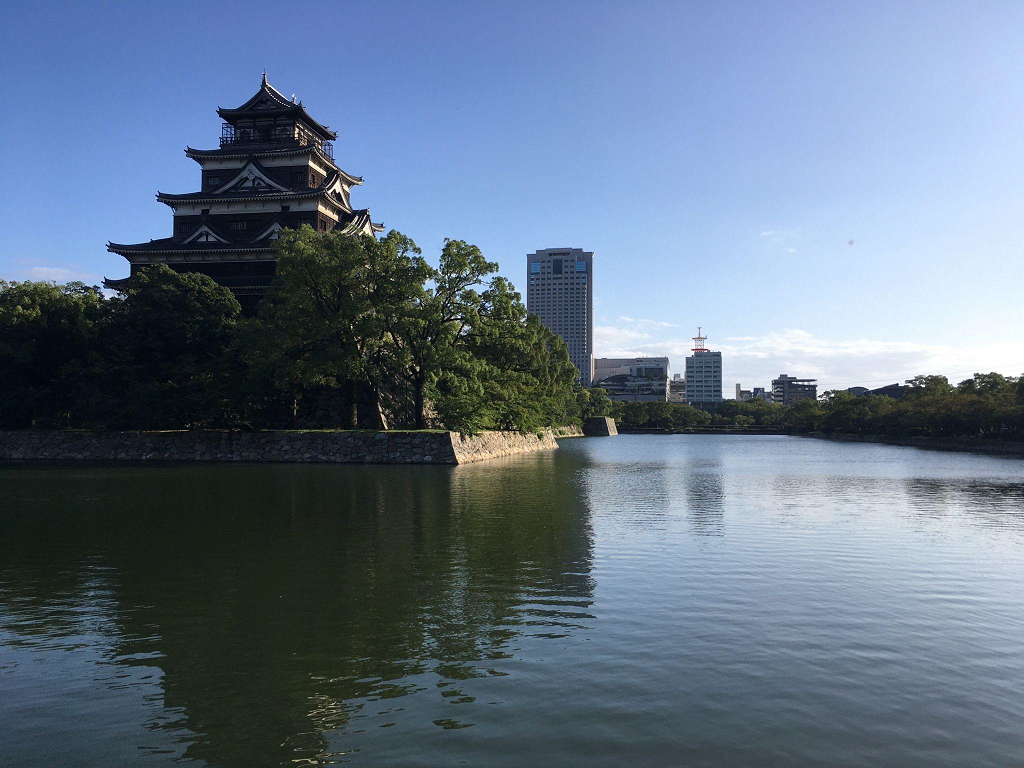
Hiroshima castle
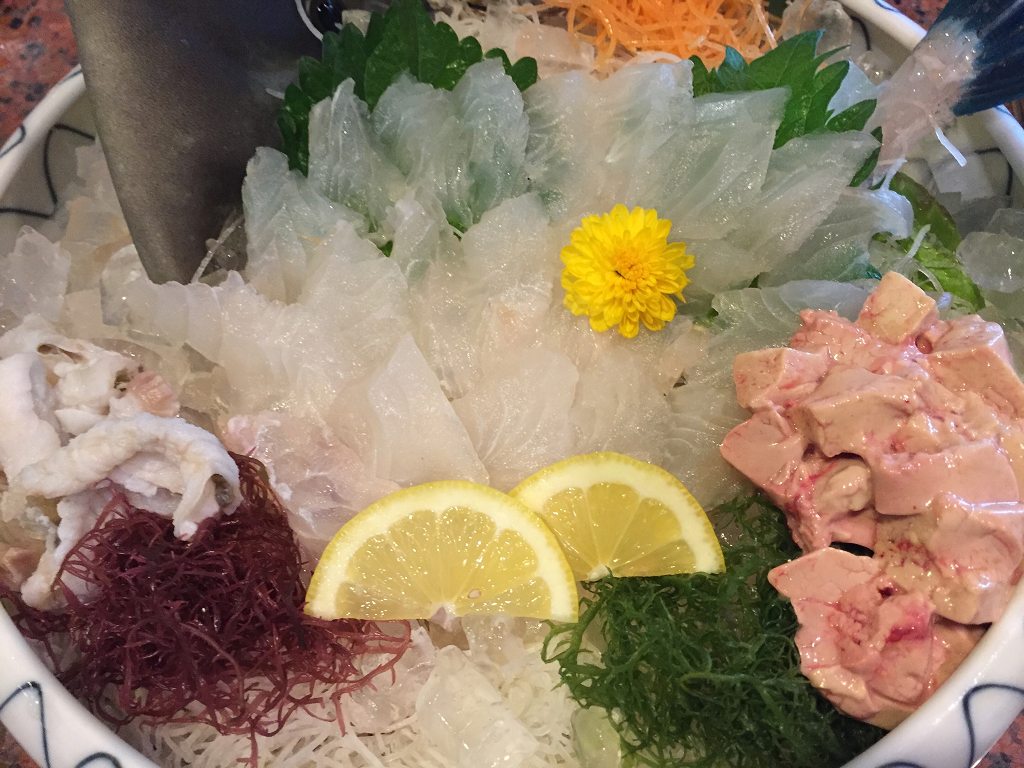
Sashimi of leatherfish
Food of Hiroshima City
Food 1: Okonomiyaki = Casual Teppan-yaki
Okonomiyaki is the soul food of Hiroshima. It was invented when food was scarce after the defeat in
World War II and developed rapidly to become a Hiroshima specialty. There are more Okonomiyaki shops
than coffee shops in Hiroshima, and the city is filled with the aroma of the Okonomi-sauce burning
on the griddle.
Okonomiyaki is made by rolling out a small amount of flour dough on a teppan, topping it with a
large amount of shredded cabbage and pork, steaming it, turning it over, layering it with Soba (Not
Japanese Soba noodle but Chinese noodle) or udon and a fried egg, and finally pouring sauce (similar
to Worcestershire sauce) over it. The seasoning depends largely on the sauce. It is interesting to
note that the taste of the sauce varies slightly from restaurant to restaurant.
Every okonomiyaki restaurant has its own teppan (griddle) where beef, vegetables, and oysters are
cooked and served.
A piece of okonomiyaki for lunch is typical. However, it is also possible to enjoy a full course
meal in the evening, with beer, beef tendon meets with ponzu sauce (called "Sujipon") while waiting
for the okonomiyaki to be cooked. (This is my favorite.)
All you have to do is tell them whether you want soba or udon, and you get plain okonomiyaki with
pork, egg, and lots of cabbage. You can also order squid, squid tempura, octopus, cheese, or rice
cakes as options. Some people even ask for spring onions as a topping.
"Okonomi-yaki" means "to grill what you like," so you can choose any combination you like.
If you walk into a small okonomiyaki shop, you may be surprised to see people eating directly from
the griddle with a spatula. That's the way to eat in Hiroshima.
You can try your hand at it too. Of course, it can also be cut up and placed on a plate, and eaten
with chopsticks or a fork.
Everyone in Hiroshima has their own favorite okonomiyaki restaurant. We encourage you to try an
okonomiyaki restaurant = casual teppanyaki restaurant with the locals.
Another unique feature of Hiroshima is that okonomiyaki can be delivered to your hotel if you ask,
just like a pizza delivery service. It's also possible to order at the restaurant and take it home
yourself.
Outside of Hiroshima, Osaka also has okonomiyaki. Osaka-style okonomiyaki is also cooked on a teppan
(iron plate), but it is a very different dish. Hiroshima people call it "okonomiyaki," and Osaka
people also call it "okonomiyaki," but they don't share the same name.
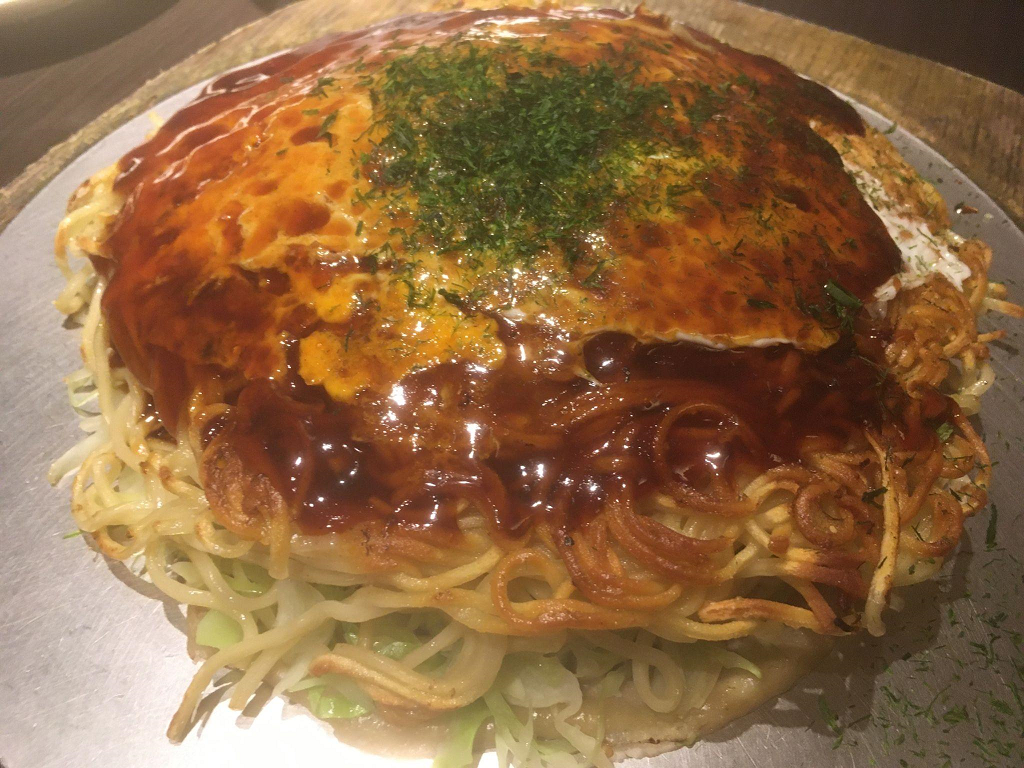
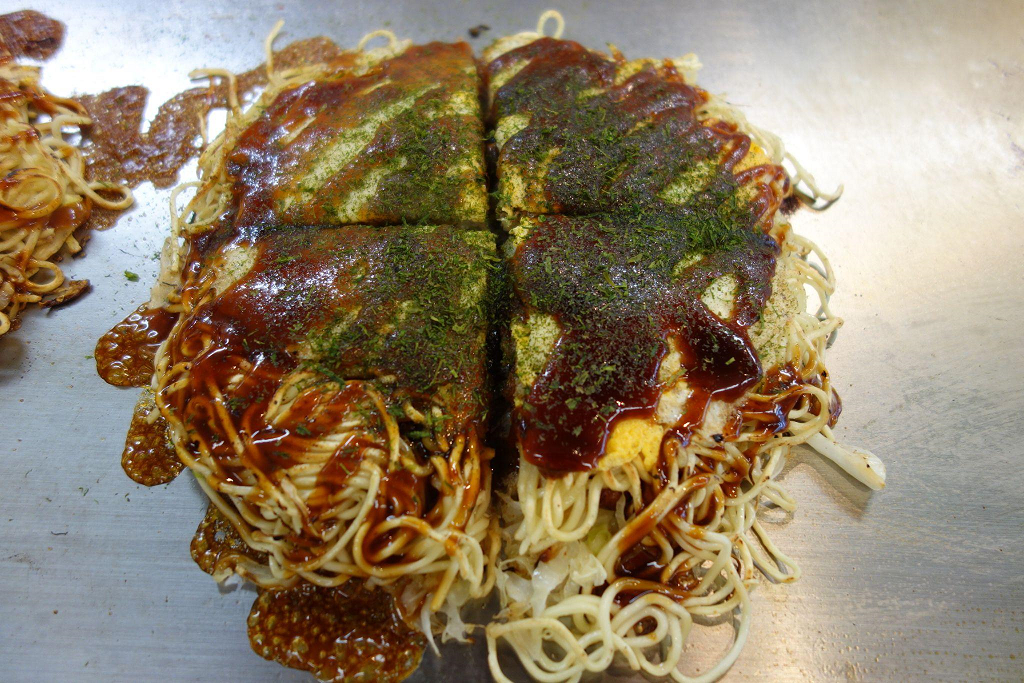
okonomiyaki
Culture of Hiroshima City
Culture 1: Hiroshima Carp (professional baseball team)
One of the most popular sports in Japan is baseball.
Hiroshima is the home of the Hiroshima Carp, one of the 12 professional baseball teams in
Japan.
There is an open-air baseball stadium on the east side of Hiroshima Station. This is the Mazda
Zoom-Zoom Stadium, the Hiroshima Municipal Baseball Stadium. The Hiroshima Carp are known for their
red uniforms, and red is, therefore, the image color of Hiroshima. If you see children wearing red
caps, it is a Hiroshima Carp cap. It will have the letter C of the Carp embroidered on it.
The professional baseball season starts at the end of March and ends in October, with each team
playing about 140 games a season and the winning percentage deciding who finishes first for the
year.
When there is a Carp game in Hiroshima, people walk around the city wearing their uniforms and
carrying their supporters' goods. It is a characteristic of Hiroshima that every city citizen seems
to support the Carp with such enthusiasm.
Tickets to the stadium are highly competitive and very difficult to obtain. However, if you are
lucky enough to get into the stadium and watch a game, you will be able to enjoy the game on the
beautiful natural grass field, the passionate support of both teams, and the food and drink in the
stands.
When the Carp win, we rejoice with them, and when they lose, we talk about it as if we were critics.
The people of Hiroshima are happy and sad when the Carp win or lose.
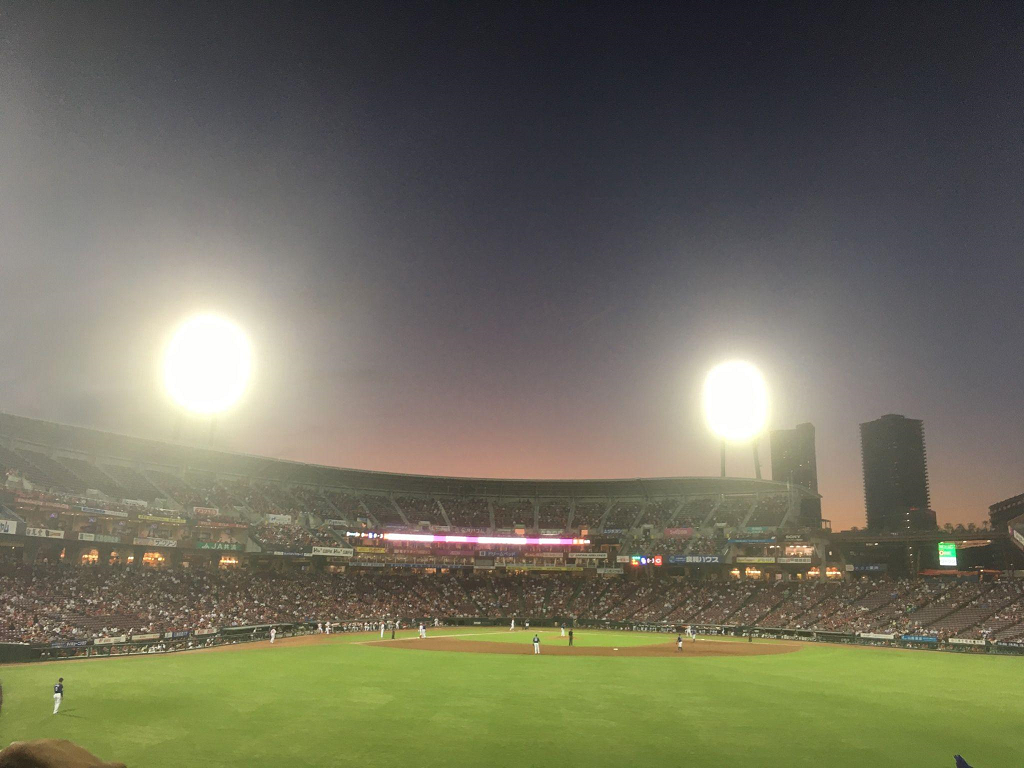
Mazda Zoom-Zoom Stadium (the Hiroshima Municipal Baseball Stadium)
Highlights of Hiroshima City
Highlight 1: Hiroshima, the city of water
The Ota River divides into eight rivers within Hiroshima city, forming a delta of Hiroshima of
approximately 4km to its mouth.
Above the river, the sky is open, and the wind blows. People stroll or jog along the banks of the
rivers.
Before the automobile, these rivers and canals were used to transport people and goods. Nowadays,
the canals have been reclaimed and now remain only as street names (e.g., Nagarekawa, meaning
flowing river) and no longer transport goods by river.
However, traces of the canal can still be seen in the stone steps named Gangi, which can be seen
here and there along the river.
Due to the complexity of the topography of the Seto Inland Sea, the tides in Hiroshima are very
high. The difference between the ebb and flow can be over 3 meters at high tide. That is why the
stair-step "Gangi" was necessary.
Some of the Gangi are still used for boarding and disembarking boats and marine sports. On a fine
day, people can be seen enjoying kayaking and SUP. It is also lovely to sit on the Gangi and watch
the river.
From the pier at Peace Park, you can also take a fast boat to Miyajima, which is named World
Heritage Line.
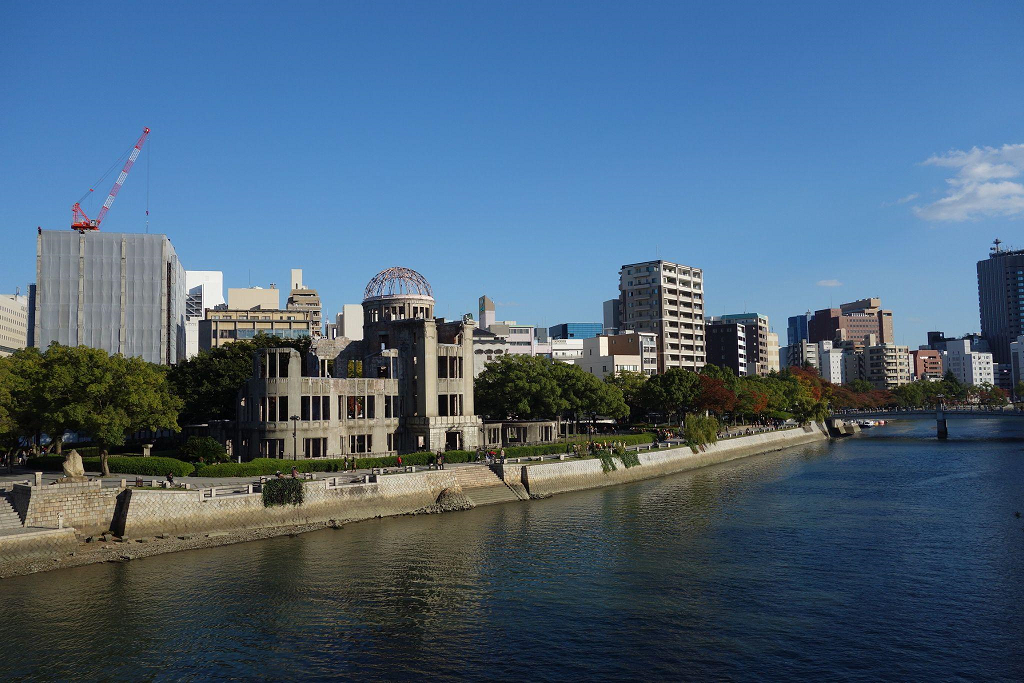
canal with stone steps called "Ganji"
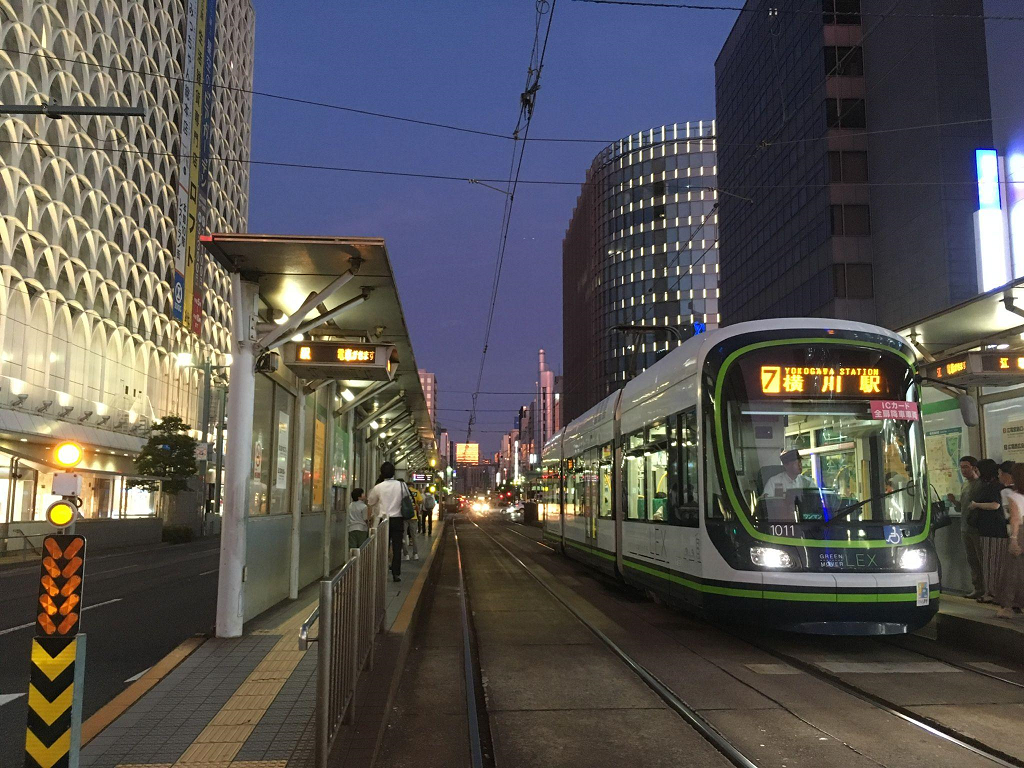
tram
Highlight 2: Peace Park and Peace Memorial Museum
Peace Park is located in Former Nakajimacho town, which was the most prosperous area of Hiroshima
before World War II. The area was once the nexus of the Saigoku Kaido (West Japan Road: east-west
road) and Izumo Kaido (north-south road), and the confluence of rivers as well, so many shops, inns,
and restaurants lined the area.
After the atomic bombing, this whole area was turned into a peace park, and the Peace Memorial
Museum was built. The Peace Boulevard was set up in the east-west direction. The Peace Axis was
north-south, connecting the museum and the Atomic Bomb Dome (planned by architect Mr. Kenzo
Tange).
Every year, on 6 August (the day the bomb was dropped), a peace ceremony is held. Many guests from
all over the world attend the ceremony.
Hiroshima has become a lush green city in the 50 years since the bombing, despite the words of the
US survey team that nothing will grow for 75 years. But it has not escaped the label of being a city
exposed to radiation. In that sense, 75 years on, Hiroshima may not have regained its original
culture.
Highlight 3: Shukkeien Garden and Hiroshima Prefectural Art Museum
This Japanese garden celebrated its 400th anniversary in 2020. The garden belonged to the Asano
family, who were the lords of Hiroshima Castle. Still, it survived the war and is now open to the
public. It is one of the remaining Daimyo gardens (garden owned by Daimyo = Leader of Samurai). When
you enter the garden, you will feel you have stepped back into Daimyo time. It is a garden with such
charm.
The name "Shukkeien" means a garden with a reduced view. Japanese gardens are characterized by the
feature of condensing natural landscape into a small garden, using methods such as 'Mitate' and
'SHakkei.' The former is to make rocks and water look like mountains and rivers. The latter is a
borrowed scenery to incorporate mountains beyond the garden into the garden landscape.
The pond is filled with Nishikigoi (Japanese carp), and as you stroll around the pond, the view
changes from one to the next. Depending on the season, plum blossoms, cherry blossoms, and autumn
leaves bloom, and sometimes tea ceremonies are held, allowing visitors to experience a traditional
Japanese tea ceremony. If you are lucky, you may even see people dressed in kimonos (or colorful
yukata in summer).
The gardens are not air-conditioned. If the summer heat becomes unbearable, we recommend visiting
the adjacent Hiroshima Prefectural Art Museum. The lobby is a good place to relax. Besides a rich
collection of works by Dali and others, there is a restaurant with a view of the Shukkeien garden
and a well-stocked museum shop. It's not just a place to escape the summer heat. That is a museum
where you should spend some time.